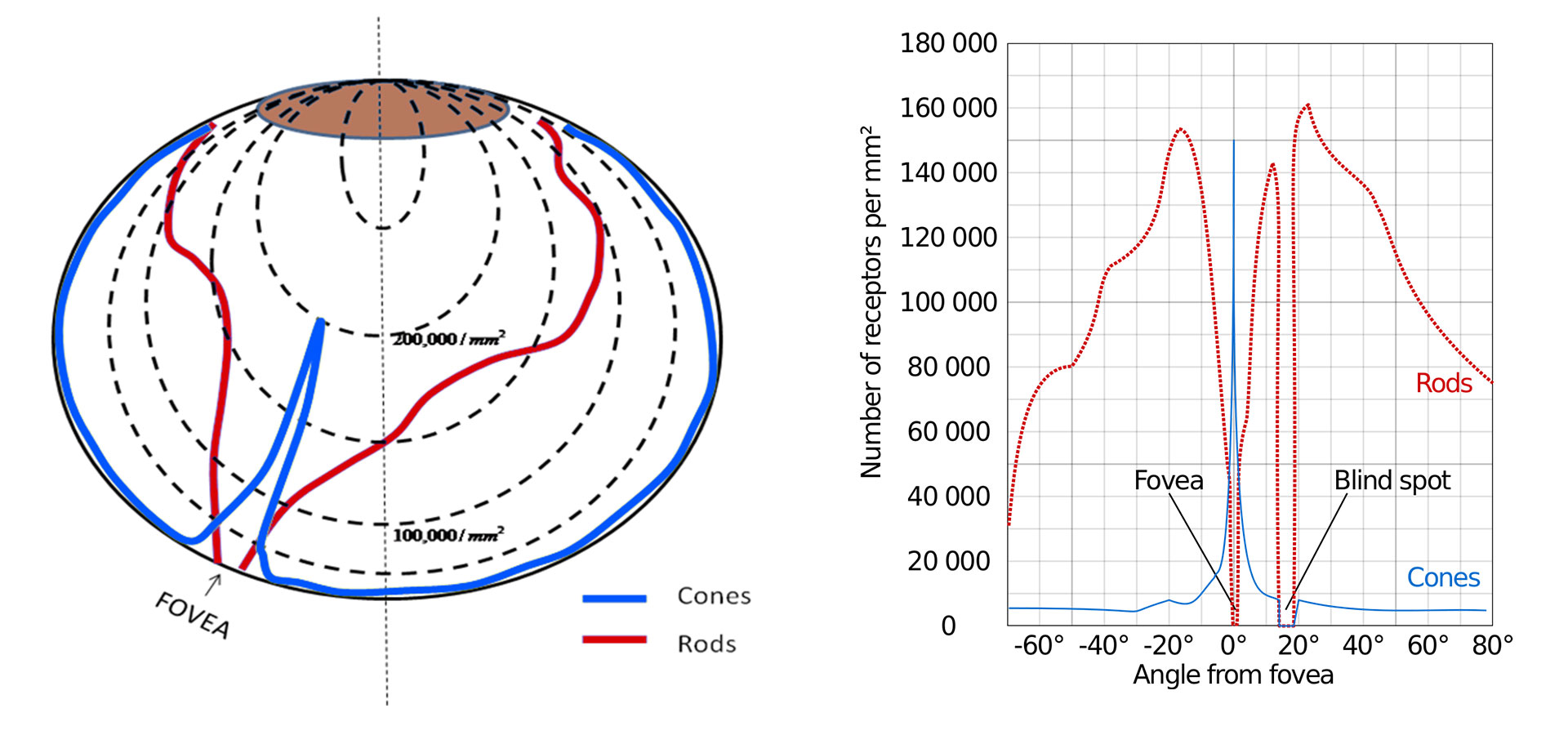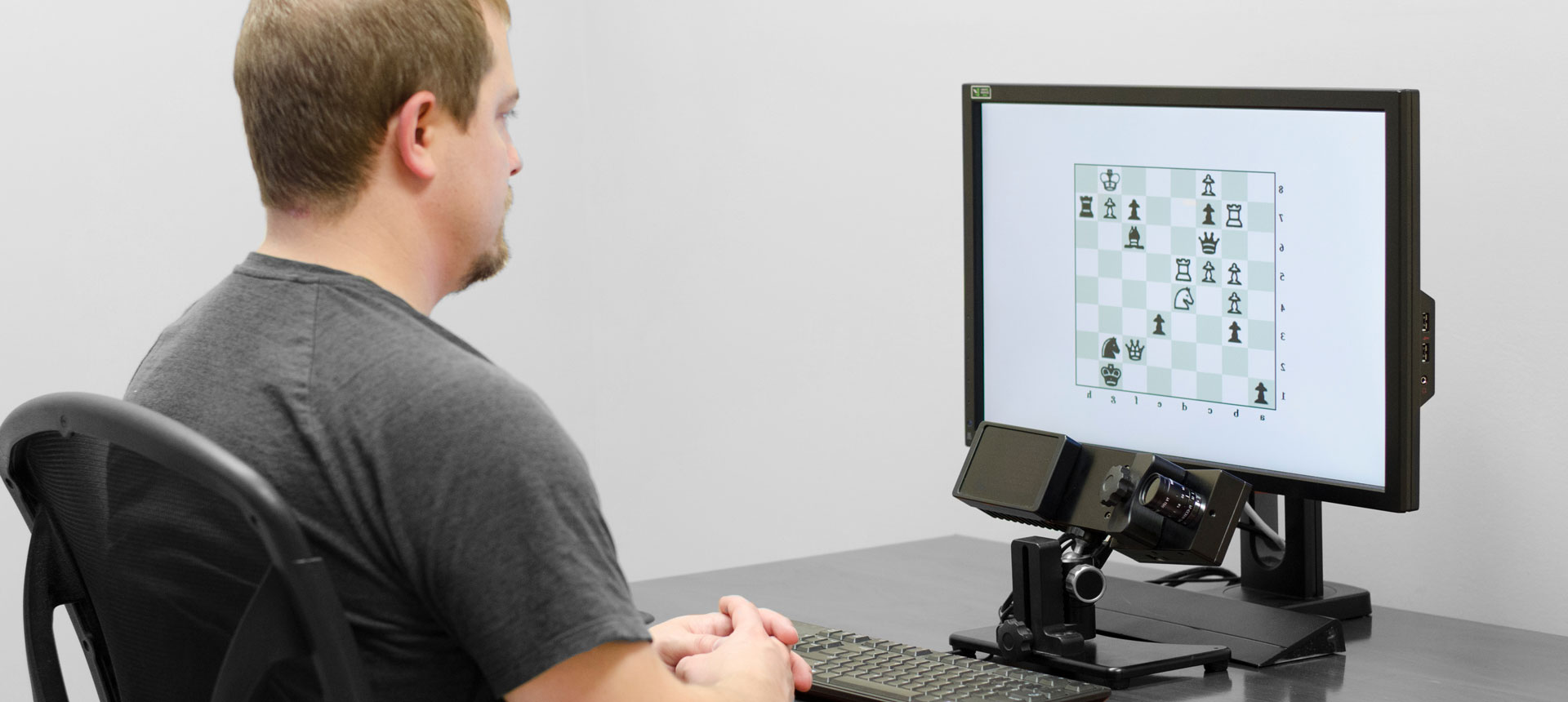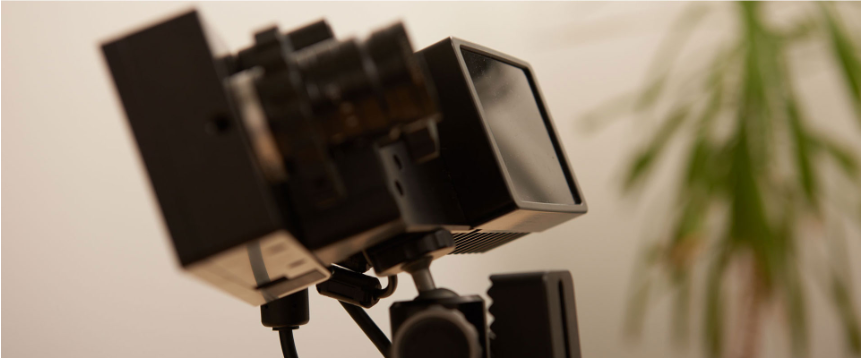What is eye tracking? Put simply, eye tracking is the process of measuring eye movements. A typical goal for eye tracking research is to establish where people look (i.e., their “point of regard” or “gaze”). To this end, scientists usually use a video-based eye tracker, such as the EyeLink 1000 Plus. Video-based eye trackers, in addition to monitoring gaze, can reveal other useful measures including pupil size and blink rate.
Why are scientists interested in eye tracking?
One of the most common rationales for eye tracking is known as the “Eye-Mind Assumption”. This is essentially the idea that we focus our limited processing resources on the information we are looking at. By monitoring our eye movements, researchers attempt to infer what is happening in our brain.
Vision
To better understand the Eye-Mind Assumption, it is necessary to briefly consider eye physiology. Only a relatively tiny part of our retina, the fovea, contains a sufficient density of cones (color sensitive cells) to resolve the visual world in significant detail. The fovea itself covers an area of only 1-2 degrees of visual angle. The rest of the scene is mainly processed by rod cells. Rods are sensitive to light and dark changes, and allow us to detect large shapes and motion – but not fine detail. The figures below illustrate cone and rod cells density and distribution.

Given that our perception of the world seems relatively detailed, it may be a surprise that only an area the size of a coin held at arm’s length is actually being “seen” in detail. We construct a perception of the outside world from a series of snapshots by moving our eyes (re-orienting the fovea) approximately three times every second. These rapid reorienting eye movements are known as saccades. In between saccades, the eye “fixates” and is relatively still. We process only the visual information acquired during fixations.
Eye Tracking and the Eye-Mind Assumption
So as a consequence of a small fovea, our brain makes a very important decision about three times every second: Where, and when, should the eyes move. We make many decisions each day – including what to eat, which coffee to choose or whether to move the queen in a game of chess. These decisions are influenced by many factors, such as our previous experience of similar situations and our current emotional state.

Importantly, these same factors can also influence our decisions about where to look next. So our intentions, goals, expectations, memories, beliefs, and even our personality types can all influence where we choose to look. Psychologists, neuroscientists, and many other researchers use eye tracking to explore these processes. For example, a researcher can study the differences in eye movements between expert and novice chess players to understand the relationship between chess expertise and memory for chess positions.

How can eye tracking help my research?
By analyzing eye-movement data, for example where people fixate and how long they fixate for, researchers can gain important insights into a number of cognitive operations involved in a wide range of behavior. For example, with eye tracking data, applied researchers can study how shoppers make purchasing decisions and how radiologists interpret x-ray images. Language researchers can use eye tracking to examine how people read and comprehend spoken language. In addition, by studying infants, children and adults, developmental researchers can learn how these processes develop (and deteriorate). By studying eye movements in patients with disorders such as Alzheimers Disease or Schizophrenia, clinical researchers can gain insights into the disease processes themselves. Researchers can gain even more insights by integrating eye tracking with other neuroimaging technology such as EEG, fNIRS, and fMRI.
So next time you are struggling to decide which coffee to order, take comfort that your brain is already making several critical decisions, every single second.

